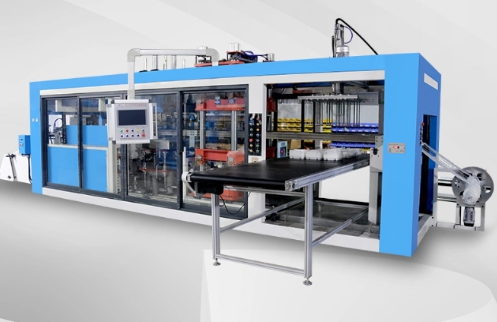Views: 0 Author: Site Editor Publish Time: 2025-09-30 Origin: Site
Choosing the right thermoforming machine matters. Pressure Thermoforming Machine delivers precision and smooth finishes. Standard machines suit simpler, cost-effective designs. In this article, we compare both types. You will learn their strengths, limitations, and ideal applications.
A Pressure Thermoforming Machine uses vacuum and additional air pressure to shape heated plastic sheets. Unlike standard machines, it pushes material deeper into molds, capturing intricate textures and sharp edges. They typically use female molds for higher detail.
Heat the plastic sheet to softening temperature.
Position sheet over the mold.
Apply vacuum to remove air.
Apply pressure to force the sheet into the mold.
Cool and remove the formed part.
This extra pressure improves accuracy and reduces post-processing.
Enhanced surface finish: smooth and glossy.
High dimensional accuracy: precise mold conformity.
Design complexity: thin sheets over intricate molds.
Material flexibility: works for thin and thicker sheets.
Automotive: exterior trims, light housings.
Medical: surgical trays, diagnostic covers.
Electronics: device housings, appliance panels.
Consumer products: decorative or functional parts.

Standard thermoforming machines rely primarily on vacuum. They heat a plastic sheet and pull it over a mold using atmospheric pressure. Male molds are common, and the process is simpler than pressure forming.
Works best for simple geometries.
Moderate detail capture.
Faster production cycles for medium volumes.
Lower surface finish quality compared to pressure forming.
Packaging: trays, clamshells, blister packs.
Automotive interiors: dashboards, door panels.
Medical: disposable items with basic detail.
| Feature | Pressure Thermoforming Machine | Standard Thermoforming Machine |
|---|---|---|
| Surface Finish | Glossy, high-fidelity | Basic, limited texture |
| Tooling Complexity | Complex, higher cost | Simpler, cost-effective |
| Material Thickness Handling | Thin & thick sheets | Moderate to thick sheets |
| Production Speed | Slightly slower | Faster for medium batches |
| Design Capability | Complex, fine details | Moderate detail |
| Part Strength | Enhanced, accurate molding | Good for general use |
ABS, PETG, PMMA, PC, EVA, UHMW
Handles thin sheets and maintains precision.
HIPS, PVC, PP, PE, LDPE
Suited for basic shapes and moderate thickness.
Sheet flexibility and thickness.
End-use requirements like durability and aesthetics.
Material behavior under pressure affects surface finish.
Pressure forming is best for materials needing precise detail capture and high-quality finish.
Pressure forming has higher initial tooling costs.
Returns come from higher quality and reduced post-processing.
Standard machines have lower upfront costs.
Intricate designs require pressure forming.
Simpler geometries suit standard machines.
Small to medium runs may favor standard machines.
Large, high-detail production benefits from pressure forming.
Pressure machines need precise calibration.
Mold care is critical for consistent part quality.
Standard machines are easier to maintain.
Consider production volume and long-term ROI when choosing a machine.
Pressure forming: exterior trims, premium surfaces.
Standard forming: interior panels, dashboards.
Pressure forming: surgical trays, high-detail housings.
Standard forming: basic disposable items.
Pressure forming: precise housings, appliance panels.
Standard forming: simple protective casings.
Standard forming: lightweight, protective packaging.
Pressure forming: high-detail display trays.
Align machine choice with industry standards and product expectations.
Complex textures, fine edges → pressure forming.
Simple geometries → standard forming.
Higher upfront cost pays off in precision and aesthetics.
Standard machines save initial investment for less critical parts.
Compare design complexity, surface requirements, and volume.
Evaluate material properties and mold design constraints.
Consult vendors for machine specifications before purchase.
A decision matrix can help align product needs with machinery capabilities.
MINGDU's Pressure Thermoforming Machines deliver exceptional precision and superior surface finishes, outperforming standard thermoforming machines. For simpler production, standard machines remain cost-effective, but MINGDU's versatile solutions enhance efficiency, product quality, and ROI across diverse manufacturing applications. Choosing MINGDU ensures access to advanced Pressure Thermoforming Machines that meet both complex design requirements and high production standards.
A: It is a machine that uses vacuum and air pressure to form plastic sheets with high detail and surface finish.
A: It provides finer detail, smoother surfaces, and higher precision, highlighting the advantages of pressure thermoforming over standard thermoforming.
A: It is ideal for complex designs, tight tolerances, and premium finishes that standard machines cannot achieve.